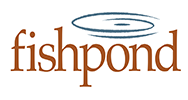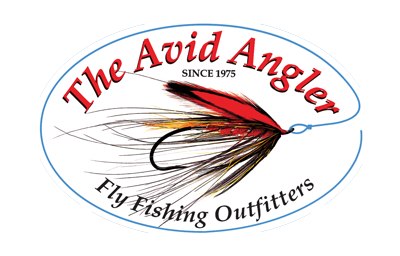Cedar River, WA

Weather and Flows Links
Fly Fishing the Cedar River
Within a 20 min. drive of downtown Seattle, the Cedar offers locals the chance to tangle with trout on dry flies, nymphs and streamers. The 20+ miles of fishable water runs from the mouth in Renton up to the diversion dam at Landsburg, and is paralleled closely by the Cedar River Trail . As such, the foot access for the wading angler is excellent provided the flows are below 300 C.F.S..
When is the Cedar River Open to Fishing?
Fishing regulations are subject to emergency closures and they change from year to year, so before you go, know what you are fishing for and always check the regs:
http://wdfw.wa.gov/fishing/regulations/.
Feel free to give us a ring with questions. It’s better to be safe than sorry!
Generally open from the first Saturday in June until August 31st, this catch-and-release fishery is managed under selective gear regulations, which means single, barbless hooks.
You can fish up to 3 flies on the Cedar.
Upper Cedar River
Near Landsburg, the river threads its way through boulder-strewn pocket water that presents excellent holding lies for trout. Although wading can be difficult, the scenery of the upper river is worth a visit in itself. Dense vegetation offers a buffer between crystal-clear waters and the surrounding residential area, creating an illusion of separation from the growing neighborhoods. Solitude on the Cedar is sometimes hard to come by, but as a general rule the upper river sees fewer non-anglers and less pressure. For those who put in their time on foot, the upper section can hold memorable days that make you feel as if you’re miles away from Seattle’s urban center. There are some really nice fish up high as well!
Lower Cedar River
As the river approaches Renton, it becomes more urban and sees greater use from the local community. On a hot summer day, it is not uncommon to fish among inner tubers on a pleasure float and chat with locals cooling down by the riverside. Although it can be popular, especially near common access points, the lower river does offer the intrepid angler great days on the water. Excellent fishing is found throughout the entire length of river, but it is generally acknowledged that there is a larger concentration of fish near Renton. Whether this is due to its proximity to Lake Washington is a matter of debate, but one thing is sure – once you hook into a lower-river Cedar ‘bow, you will be marking your calendar for the opener! Dotted with urban parks that offer excellent foot access and convenient parking within eyesight of busy playfields and picnic spots, the lower section also provides convenient access to anglers with a busy schedule. Be smart about where you park, don’t leave valuables in your car, and take advantage of this unique urban trout fishery before and after work.
What Can I Catch in the Cedar?
Although rainbow trout are your primary target, the Cedar also hosts a good populations of west-slope and coastal cutthroat. Linked to the Puget Sound via Lake Washington, the Cedar is closed most of the year to protect its fragile runs of sockeye, chinook, coho and steelhead. The majority of the trout in the Cedar are 8 – 10 in., and they move to dry flies! These fish can be found throughout the river in most of the riffles, pockets and pools. During a summer evening, the action can be fast paced and offers great practice for those new to the sport. In addition to the healthy population of smaller fish, the Cedar offers the chance for experienced anglers to pursue trophy-size rainbow and cutthroat trout. These fish are not numerous, but there are enough available to make fishing the Cedar exciting. Fish in the 16 – 19 in. range are not uncommon, and fish larger than that are a possibility. Dedicated anglers will hike many miles of river searching for these trophy fish
Tips for Fishing the Cedar
- Be very careful wading the river if you choose to fish when the river opens. Flows above 300 C.F.S. are not recommended.
- June can be a time of high water on the Cedar, and fishing nymphs and streamers is typically the most productive until the water drops below 300 C.F.S.. Keep in mind this may not be true during low-water years. Although caddis can hatch during June evenings, generally the water and air temps are too cold to produce much insect activity on top. However, the higher water flows offer more refuge and increased holding water for trout, especially the big boys.
- July generally sees the flows come down to a manageable level for the wading angler, and hatches of caddis, Pale Morning Dun mayflies and summer stones can produce fish on top. Mid-month, you generally see the start of the prolific evening surface activity right around dusk. Try fishing a simple Elk Hair Caddis after 7 P.M. and have fun! Other techniques to try: swinging streamers in deep pools, fishing a caddis soft hackle during the evening caddis hatch.
- August flows can be very low, which exposes holding lies and concentrates the fish in deeper water. Wading becomes easier, and the river can fish very differently due to the reduced flows. Fish can be very picky during this time due to increased fishing pressure and warmer water temperatures, so getting on the water early or late is more important. Fishing on top remains good all the way through the closure, but matching what’s coming off is more important.
Local Guides and Expert Instruction
We are experts in fishing our local trout waters, and hiring a guide can take years off the learning curve. The best way to experience the Cedar is during a full-day walk and wade trip.
Recommended Equipment
|
Recommended Flies
|
The Cedar River is about half an hour from Seattle and truly represents an urban river. This river, which drains into Lake Washington, is open to catch and release fishing from just below Landsburg Dam upstream of Maple Valley all the way down to the mouth at the city of Renton. The river is only open during June, July and August and is closed for the rest of the year to protect weak runs of sockeye and winter steelhead. As such, the fishing is limited to resident rainbows and cutthroat.
The Cedar hosts some bragging size rainbows and cutthroat for a river on the westside of the cascade mountains. These fish are not numerous, but there are enough available to make fishing for them a very viable option. Fish that are 16" to 19" long are relatively common, with larger fish up to 25" and 5 pounds a possibility. They are not present behind every good looking rock, however, and a diligent angler will hike many miles of river searching for these trophy fish. They can be taken on all types of flies, with streamers and large nymphs generally being the most productive.
Cedar also hosts a good population of smaller fish that average 8" to 10" and that take dry flies well. These fish can be found throughout the river in most of the riffles, pockets and pools.










